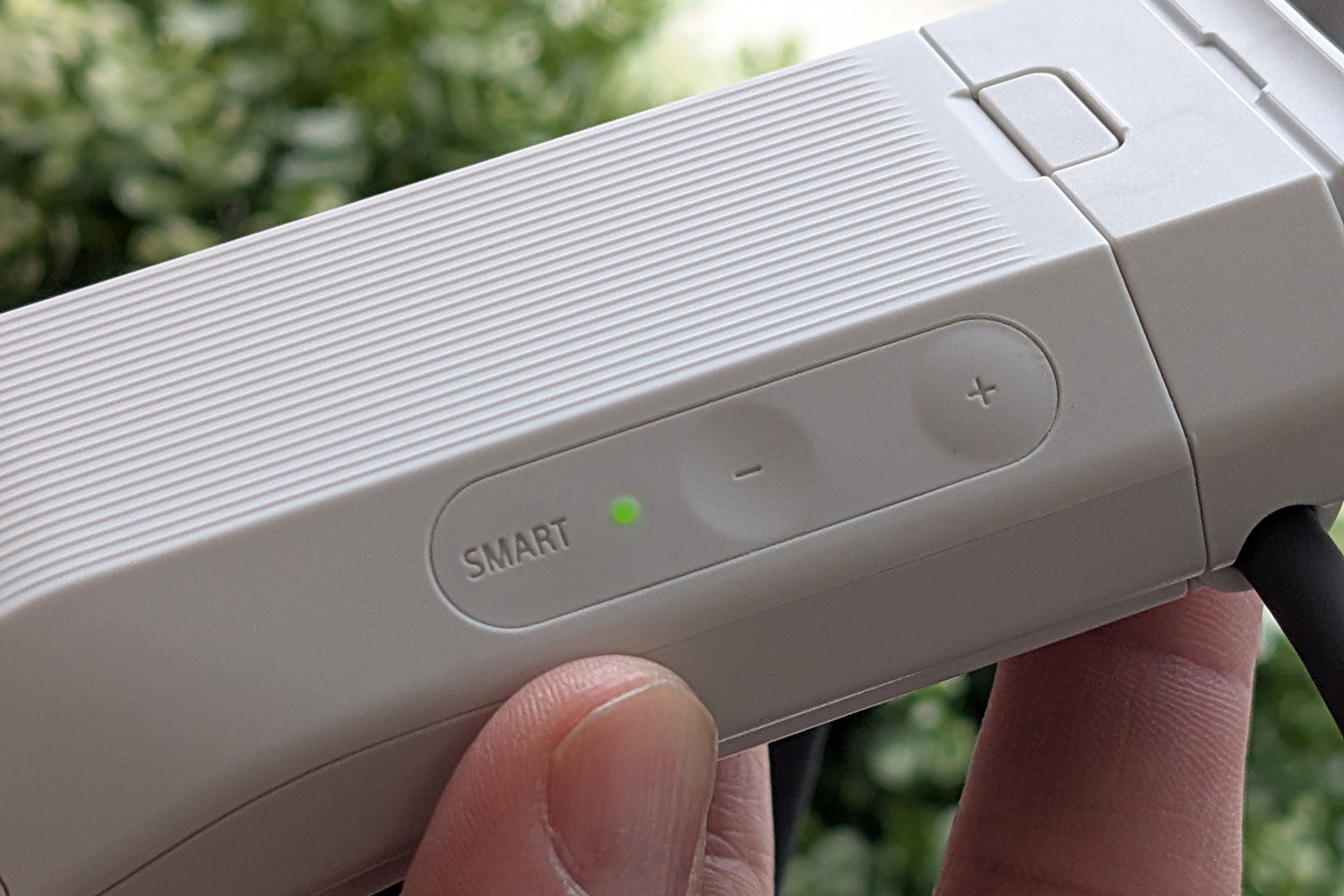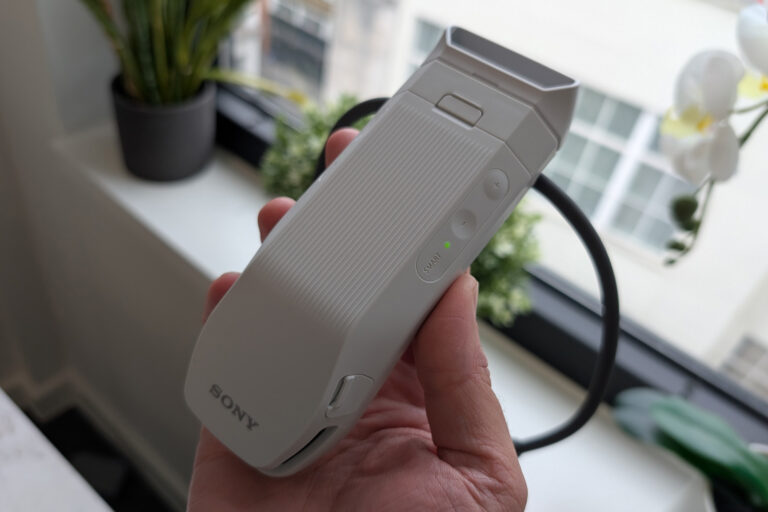There’s a fine line between today’s wearable tech and cyberpunk sci-fi; Sony’s new Reon Pocket Pro personal temperature regulator sits right on the crossroads. The sixth iteration of the neckband cooler isn’t ready to repurpose your lost fluids like a Dune Stillsuit, but has seen some significant changes to better help stop you getting hot under the collar. Unless that’s what you’re wanting, of course.
As with last year’s Reon Pocket 5, it’s a hands-free alternative to a portable electric fan (or, perish the thought, a paper one you wave yourself) or hand warmer. Aimed at commuters, office workers and travellers, it sits out of sight under your shirt, where a thermoelectric cooling (TEC) plate makes contact with your skin; it cools down or heats up based on built-in humidity and temperature sensors.
This new version doesn’t get any hotter or colder than before (Sony reckons pushing too far in either direction would be uncomfortable) but the TEC plate surface area has more than doubled. The cooling effect is twice that of the old model, with two separate peltier elements that take turns to chill you. Swapping between plates every ten or so seconds stops your brain from getting used to the sensation.
It helps that the unit has a more pronounced curve, to more naturally follow the contours of your neck and spine. The neck band is way more adjustable this time around, too; the flexible arms and rubber end tips make it easier to find a comfortable fit while still giving the exhaust fin enough room to vent hot air up past your collar.
The whole thing has grown to accommodate the extra cooling hardware, so Sony has taken the opportunity to add a bigger battery. The Reon Pocket Pro should now last up to 15 hours in the Smart cooling mode at an ambient 30 degrees celsius, or double what the previous-gen model could manage. The more powerful internal fan is also 50% quieter than the old version, and the cooling algorithms have been tweaked so it’s twice as fast to react to changing external temperatures.
It’s still finished in light grey – because, let’s be honest, no-one’s office shirts are truly white after a few wash cycles – and includes vents for t-shirts and long-collared shirts in the box. The whole thing is splash and sweat resistant, including a covered USB-C charging port and sealed control buttons.
That’s right, buttons. While you can still pair the Reon Pocket Pro to a smartphone to adjust its temperature remotely, there are now dedicated buttons on the device to change cooling mode, and increase or decrease temperature. It still turns on and off automatically as you pull it on or remove it from your neck, to save battery.

The companion app and Pocket Tag sensor haven’t changed between generations. The former still shows you the ambient temperature and humidity, the current cooling mode, and the multiple levels of cooling or heating if using the manual mode. You can pick a specific crossover at which you’ll be cooled or heated (say, 18 degrees celsius). The latter still clips onto a short pocket and monitors the temperature outside of your shirt, for better reaction to changing temperatures – like going from an air conditioned office to a stuffy train carriage.
It still takes just a couple of seconds to get properly chilly or toasty warm, with the effect lingering for however long you wear the Reon for. The fan really is whisper quiet now, and while the larger size does mean it bulges a little more prominently out from underneath a t-shirt, it’s still fairly subtle. The feeling of coolness in one spot doesn’t override how warm you might be feeling elsewhere, but it genuinely did help me feel less flustered in my AC-less home office.

The Reon Pocket Pro is launching in seven EU countries – an expanded reach from the Reon Pocket 5 – as well as Hong Kong and Sony’s native Japan. It’s set to cost £199 in the UK, which is a considerable hike from the Pocket 5’s £139 starting point.
Sony is opening up pre-orders today through its online store; customers hoping to save themselves from sweaty commutes should get their units in the coming weeks.
Read the full article here
